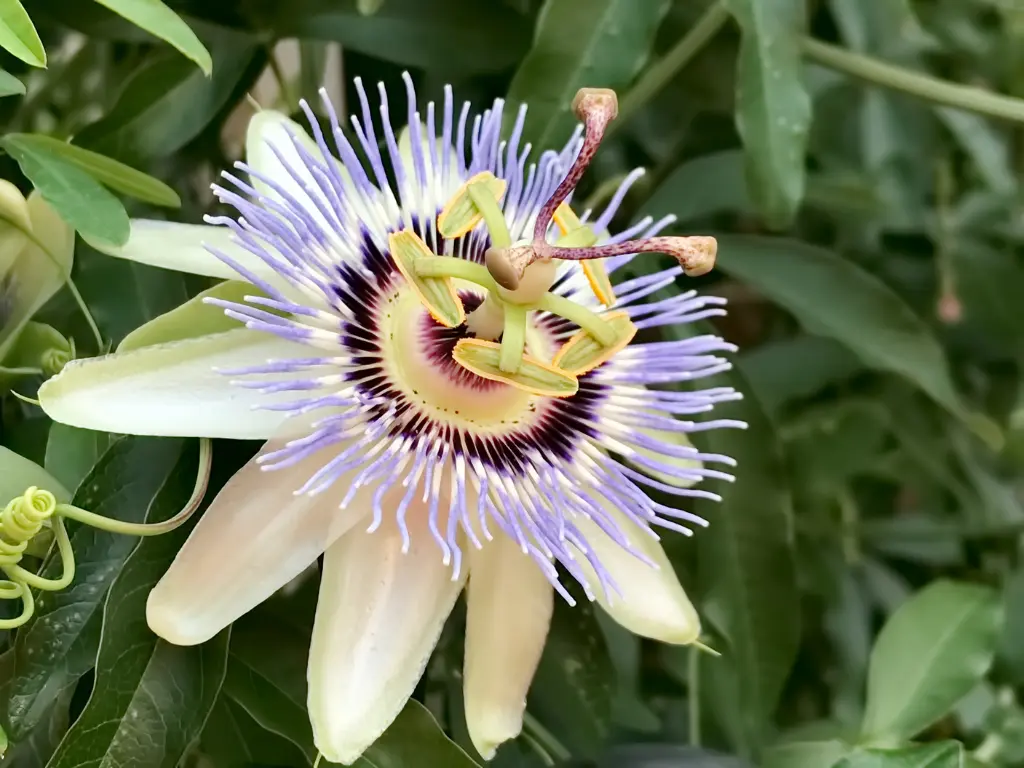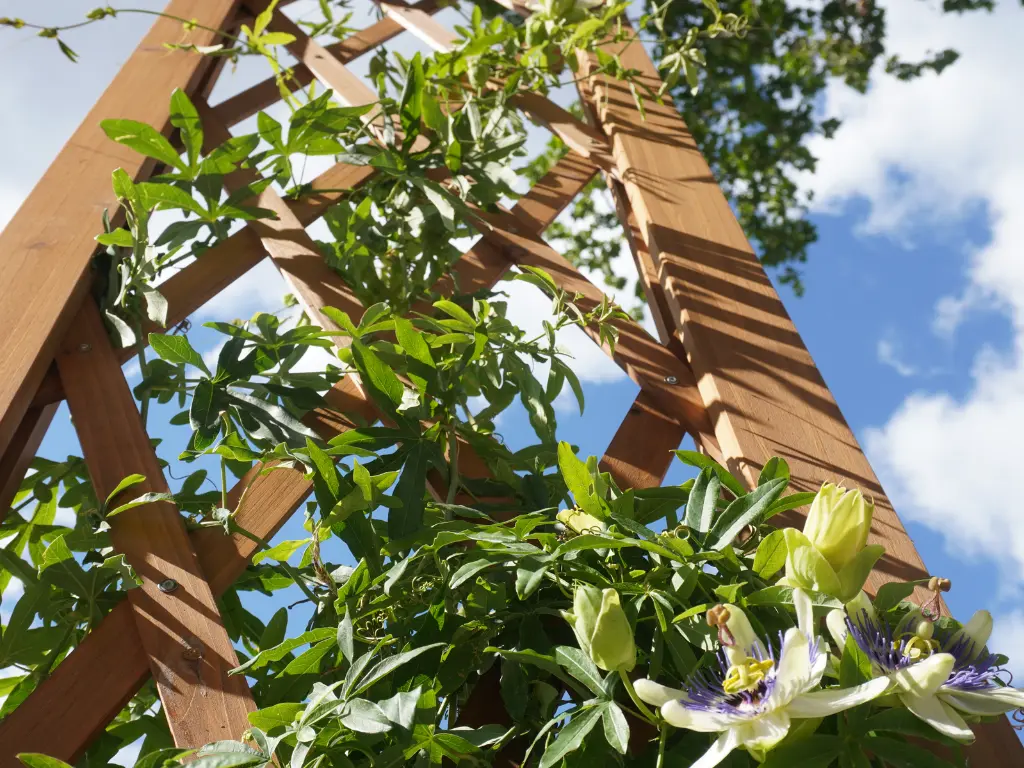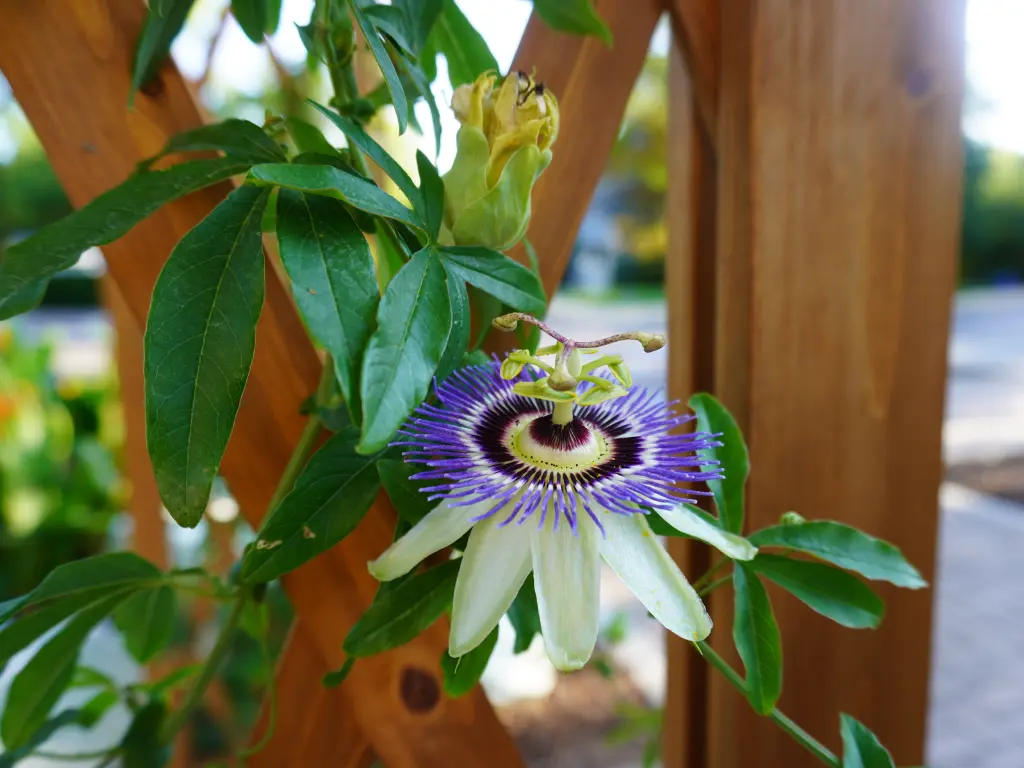Passionflower vines are truly a sight to behold—exotic, vibrant, and full of personality. Known for their unique, intricate blooms and rapid growth, these climbers can quickly transform any garden into a tropical oasis. However, training a passion flower vine on a trellis isn’t always as simple as it seems. With their stubborn tendrils and vigorous climbing nature, getting your passion vine to grow in the right direction requires a bit of patience and care. But don’t worry! With the right tips and techniques, you can easily train your passion flower vine to create a stunning display.
In this guide, we’ll walk you through everything you need to know, from choosing the perfect trellis to training and maintaining a thriving vine. Let’s get started on creating a beautiful, vertical garden with passion flower vines!
Why Train Passion Flower Vine on a Trellis?

Before we get into the nitty-gritty of training your vine, let’s talk about why this method works so well. If you’re wondering, “Why should I bother training my passion flower vine on a trellis?” here are a few compelling reasons:
-
Vertical Growth and Space-Saving: Passion flower vines are natural climbers, and by training them to grow on a trellis, you’re utilizing vertical space in your garden. This is especially helpful if you’re short on space but still want a show-stopping plant.
-
Healthier Plants: A trellis helps provide structure, allowing your passion flower vine to grow upright rather than sprawling all over the ground. This means the plant has better access to sunlight, and air circulation improves, reducing the likelihood of disease and mold.
-
Aesthetic Appeal: There’s something magical about watching a climbing vine weave its way up a trellis. The passion flower’s intricate, colorful blooms can turn a plain trellis into a stunning focal point in your garden, balcony, or patio.
-
Improved Fruit Production: If you’re growing passion fruit, the trellis provides better support for the plant, which can lead to higher fruit yield. It gives the plant more space to thrive and support its fruits as they grow.
Choosing the Right Trellis for Your Passion Flower Vine

The first step in successfully training your passion flower vine on a trellis is choosing the right structure. Not all trellises are created equal, so let’s look at what you need to consider:
1. Size and Height of the Trellis
Passion flower vines are vigorous climbers that can grow up to 15-20 feet tall, depending on the variety. Therefore, your trellis should be tall enough to accommodate their height. A trellis that is at least 6-8 feet tall should be sufficient for most passion flower varieties.
2. Material of the Trellis
The best materials for passion flower vines are wood, metal, or plastic. Wooden trellises provide a natural, rustic look, while metal trellises are durable and can withstand harsh weather conditions. Some gardeners prefer wooden trellises because they are easier for the vines to grip, while others like the sleek, modern appeal of metal.
3. Design of the Trellis
You can choose from a variety of trellis designs, such as:
-
Flat trellises: Ideal for smaller spaces like patios or balconies.
-
Arched trellises: Perfect for adding an elegant touch to your garden entry or as a centerpiece.
-
Grid-style trellises: Great for providing ample support and giving the vine something to latch onto as it grows.
4. Durability
Make sure your trellis is sturdy enough to handle the weight of a mature passion flower vine. If you’re growing a particularly large or heavy variety, consider investing in a robust trellis made from treated wood or metal.
Design hack: For a tropical vibe, pair your trellis with butterfly-attracting plants like lantana or milkweed
How to Train Passion Flower Vine on a Trellis

Now that you’ve chosen your trellis, it’s time to start training your passion flower vine. Here’s how you can guide your vine upwards and encourage it to grow beautifully on the trellis:
-
Start by planting your passion flower vine close to the base of the trellis. Make sure to plant it in well-drained soil that gets plenty of sunlight—passion flowers love the sun!
-
When the vine begins to grow, it will naturally start to seek support. Gently guide the tendrils toward the trellis and use garden ties or soft twine to secure the vine to the trellis loosely. Be careful not to tie it too tightly, as you don’t want to damage the stems.
-
Passion flowers have tendrils that naturally twist and grip onto structures. As the vine grows, continue to guide the tendrils toward the trellis. Keep the vine upright and encourage it to spread across the structure by gently tying it as it climbs.
-
Regular pruning is essential for keeping your passion flower vine healthy and manageable. Trim any dead or damaged stems and remove any excessive growth that could make the vine too bushy or tangled. Pruning also encourages more blooms and helps maintain a compact shape on the trellis.
Read more: Pruning Your Passion Flower Vine: When and How to Do It Right
Best Practices for Passion Flower Vine Care
Once your passion flower vine is securely trained on the trellis, there are a few important care tips to keep in mind to ensure it thrives:
Watering
Passion flower vines need regular watering, especially in the hotter months. However, it’s important not to overwater, as this can lead to root rot. Water deeply once or twice a week, depending on the weather.
Fertilizing
Feed your passion flower vine with a balanced fertilizer every 4-6 weeks during the growing season. This will encourage strong growth and abundant blooms.
Pest Control
While passion flowers are relatively pest-resistant, it’s still a good idea to check the vine regularly for common garden pests like aphids or spider mites. If you spot any, remove them by hand or use an organic pesticide.
Troubleshooting Common Issues
Even though passion flower vines are generally easy to care for, you might run into a few problems along the way. Let’s go over some common issues and how to solve them:
The Vine Won’t Climb the Trellis
If your passion flower vine seems reluctant to climb the trellis, it may need a bit of help. Try gently wrapping the tendrils around the trellis to encourage them to grip. You can also use soft ties to secure the vine in place until it begins climbing on its own.
Yellowing Leaves
Yellowing leaves can be a sign of overwatering or a nutrient deficiency. Ensure that the vine is not sitting in waterlogged soil and consider adding a slow-release fertilizer to replenish essential nutrients.
Lack of Blooms
If your passion flower vine isn’t blooming, it could be due to insufficient sunlight or a lack of nutrients. Make sure your vine is getting at least 6 hours of direct sunlight a day and adjust your fertilizing routine to encourage more flowers.
You may like: How to Get Passionflower to Bloom: Expert Tips for Vibrant Flowers
Frequently Asked Questions
1. How long does it take for a passion flower vine to grow on a trellis?
Typically, it takes about 2-3 months for a passion flower vine to start climbing a trellis, but it can take up to a year for the vine to reach its full height and maturity.
2. Can I train a passion flower vine on a wooden trellis?
Yes! Wooden trellises are a great choice for passion flower vines, as they provide ample grip for the tendrils to latch onto. Just make sure the wood is treated to prevent decay.
3. What are the best types of trellises for passion flower vines?
The best trellises are those that are sturdy and tall enough to support the growth of a passion flower vine. Popular choices include grid-style trellises, arched trellises, and wooden or metal structures.
4. How often should I prune my passion flower vine?
Prune your passion flower vine at least once a year—ideally in late winter or early spring before new growth begins. Regular pruning will keep the vine healthy and encourage more blooms.
Conclusion
Training a passion flower vine on a trellis is a rewarding experience that brings beauty and elegance to any garden. By choosing the right trellis, providing proper support, and maintaining your vine with regular care, you’ll be rewarded with stunning blooms that brighten your outdoor space. So, grab your trellis, get planting, and watch your passion flower vine thrive!
